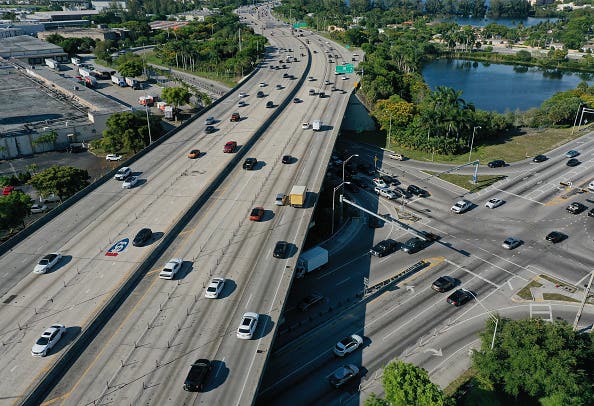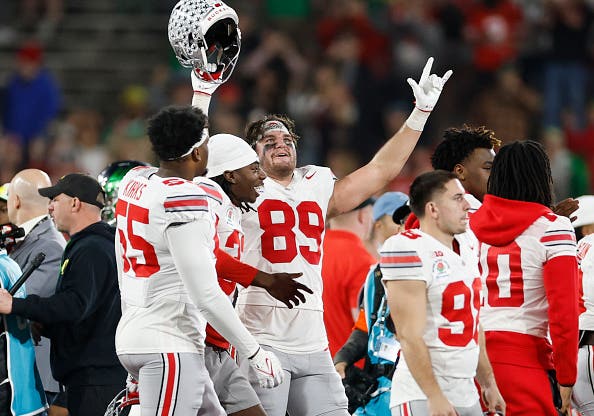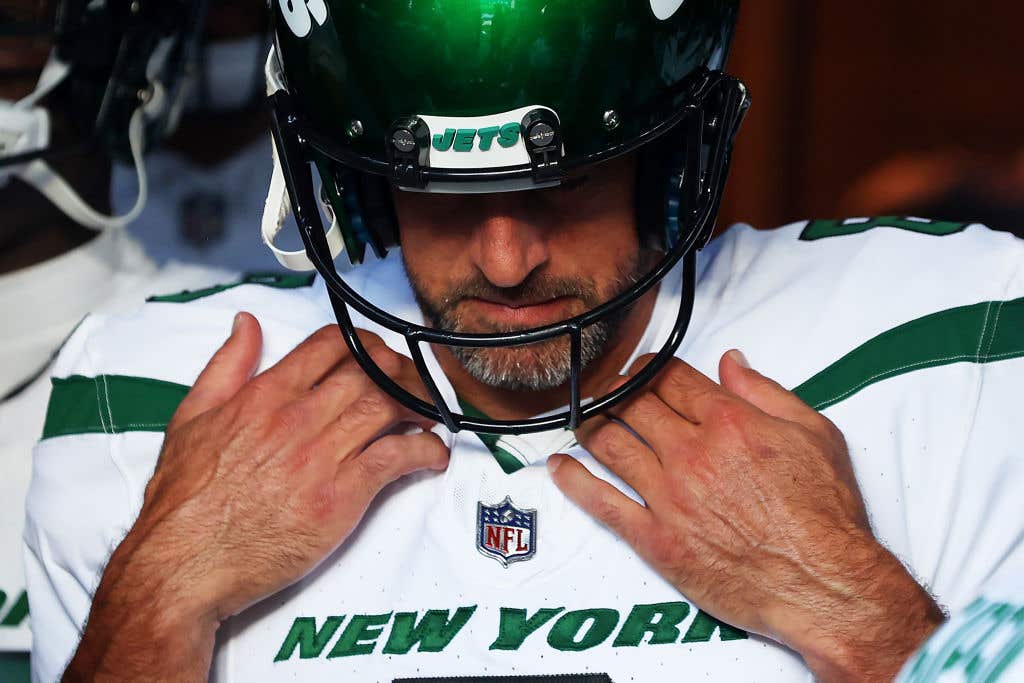
(Photo by Joe Raedle/Getty Images)
Driving around, especially during snowbird season, it's hard to believe that Florida is NOT the worst state to drive in. Which state is?
Driving in Florida is a unique experience, to say the least. From the never-ending construction to the unpredictable weather, it can be a real challenge. First, there are the tourists. They're easy to spot with their out-of-state plates and sudden stops to take pictures of palm trees. Next, there are the retirees. They have their head in the clouds and drive cars from the 1980s at a snail's pace. Then there are the spring breakers. These college students are on a mission to party and they don't care who gets in their way.
While that's my experience with driving in Florida, and possibly yours too, it might surprise you that Florida is NOT the worst state to drive in. In fact, it was ranked the 12th best in the United States. Hawaii ranked dead last.
WalletHub conducted a study looking at 4 key factors: cost of ownership & maintenance, traffic & infrastructure, safety and access to vehicles & maintenance.
When it comes to cost of owning a car, Florida came in at #26. Florida was tied for 1st place on available car washes and 4th place for number of auto shops.
Traffic and infrastructure however, we didn't do so hot. If you've driving to Orlando on I-4 or pretty much anywhere in Miami, you know what I mean. So while for congestion Florida scored near the bottom, 44th out of 50, for safety we were ranked #17.
The best states for driving are Iowa, Georgia, Ohio, Oklahoma and North Carolina. The worst are Hawaii, Washington, Delaware, Rhode Island and Maryland.
Florida Has The 7th Best Roads in the U.S.
According to recent data from Consumer Affairs, the roads in Florida rank near the tops in the nation. My first thought was that this might be because we don't get the snow and ice that leads to potholes when the snowplows come. But that's not it. The top 3 on this list get plenty of snow. And for as much hurricane damage Florida had to deal with, you'd think our roads would suffer. But 7th is not bad at all. So here's what plays into the numbers.
To determine which states have the worst roads, Consumer Affairs focused on four main factors. Percentage of roads in poor, fair and good condition: We considered the percentage of roads the Federal Highway Administration graded as being in poor, fair and good condition. Motor crash fatalities on roads per mile: The total number of fatal motor vehicle crashes in each state was sourced from the Insurance Institute for Highway Safety (IIHS). Amount spent per mile of road: We calculated the dollar amount each state spends per mile of road with data obtained from the U.S. Department of Transportation. Vehicle miles traveled (VMT): We calculated the percentage of each state's rural and urban VMT for the given category against the national sum of all states' VMTs for the given category.
So how do Florida roads stack up?
Quite well, actually. And we saw first hand after the hurricane how fast bridges and roads can be repaired here in our state. That's why I used the picture from Sanibel at the top. They got that done in one month. Amazing. And states towards the bottom? Well, we've documented the exodus from California more than once. Here might be another reason.
So here are the 2022 US road conditions by state.
Which states have the worst roads?
The states with the worst roads based on the roughness of the pavement and highway maintenance and safety budgets.
1. Hawaii
Hawaii received a D-plus on the most recent Infrastructure Report Card from the American Society of Civil Engineers.
2. Rhode Island
A whopping 75% of Rhode Island’s major roads (and 17% of its bridges) are in poor or mediocre condition.
3. Louisiana
Louisiana has 61,300 miles of public roads, and 46% of its major roadways are in poor or mediocre condition.
4. California
Just over half (52%) of California’s major roads are in poor or mediocre condition. Fifty-six percent of California’s bridges are at least 50 years old, which means many of them will likely need to be repaired or replaced in the near future.
5. Wisconsin
A driver from Green Bay said about the city’s roads, “Present roads are constantly patched and the patches last a week at best [and] the damage keeps on growing.
6. Mississippi
One driver from Greenville had no reservations when describing the state’s roads: “The roads are just horrible, like huge potholes, uneven narrow roads, horrible blind spots, no visible markings or signs — they are horrible.”
7. Arkansas
Arkansas has the highest percentage of rural roads in poor condition.
8. Colorado
One resident said about all the roads within 100 miles of Brighton: “The potholes are huge [and] damage your car before they will fix them. Even parking lots in the shopping centers are horrible. We pay tax on everything here — why aren't they in better condition?”
9. South Carolina
Recent increases in population and tourism as strains on the current traffic system.
10. Iowa
Iowa ranked No. 1 in 2022 for rural bridges in “poor/structurally deficient” condition. A quarter of its major roads are also in poor or mediocre condition.
States with the best roads
The states with the best roads frequently perform maintenance on their streets and have significant infrastructure budgets, as well as residents with good things to say about the roads they drive on each day. There's the key phrase "infrastructure budgets."
1. New Hampshire
Only about 3% of rural roads and 8% of urban roads in New Hampshire are considered poor.
2. Minnesota
According to recent data from the Tax Policy Center, Minnesota spends $952 per capita on its highways (the U.S. average is $616) per year.
3. Vermont
Vermont’s per-capita highway expenditure is $1,082 annually, nearly doubling New England’s average highway funding per capita ($584).
4. Alabama
The recently implemented Rebuild Alabama and the Alabama Transportation Rehabilitation Improvement programs are at work solving new traffic congestion problems in the state, and they’ve already tackled more than 140 road improvements since 2020.
5. Idaho
The state spends $787 per capita on its highways per year, exceeding average U.S. expenditures by about 28% and the Rocky Mountain region’s by 6%.
6. Kansas
Only about 1% of its rural roads and 10% of its urban roads are considered to be in poor condition.
7. Florida
A driver in Venice surveyed said their city had no potholes and that the roads are “nicely paved and maintained.” Not everyone in the state is happy with the traffic situation, though — some residents complained about out-of-towners who “don’t know where they are going” overcrowding their roads.
8. Georgia
Georgia has comparatively smooth roads in both urban and rural areas, with just over 1% of its rural roads and about 5% of its urban roads in poor condition.
9. Nevada
One driver gave Nevada’s roads a 10 out of 10 — only 3% of total respondents gave their state a perfect score.
10. Indiana
One motorist blames road issues on the state being “farm country” — “any improvements on any roads in the Straughn area are in vain because farmers and their farm equipment keep the roads constantly damaged. Most roads end up getting gravel-topped or chip-and-sealed. Yet, our taxes and wheel tax are expected to be paid annually,” they wrote.





